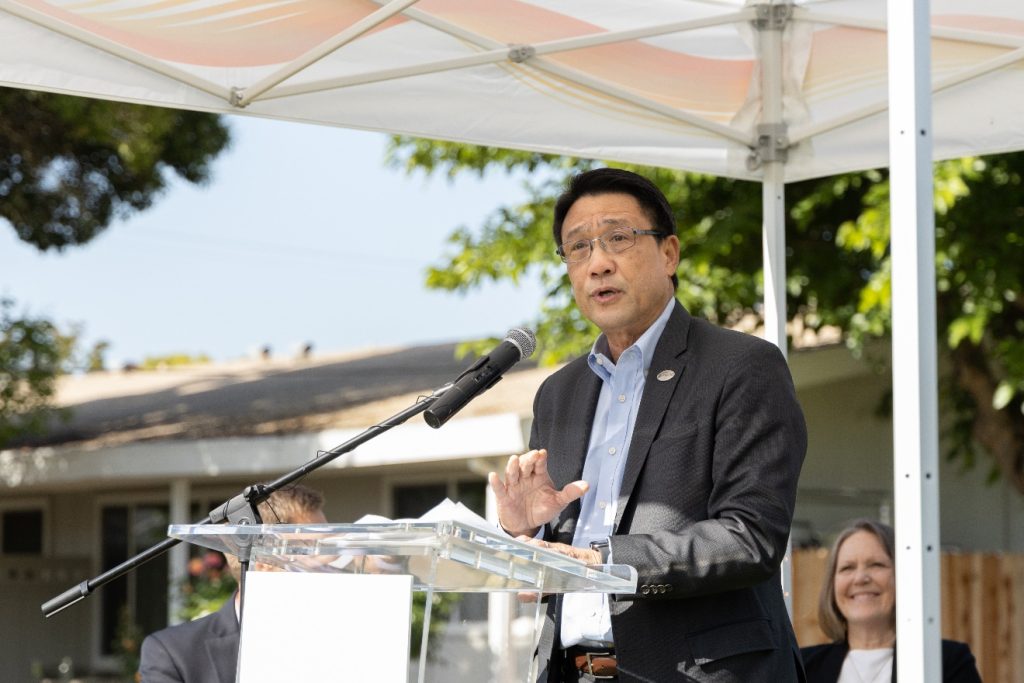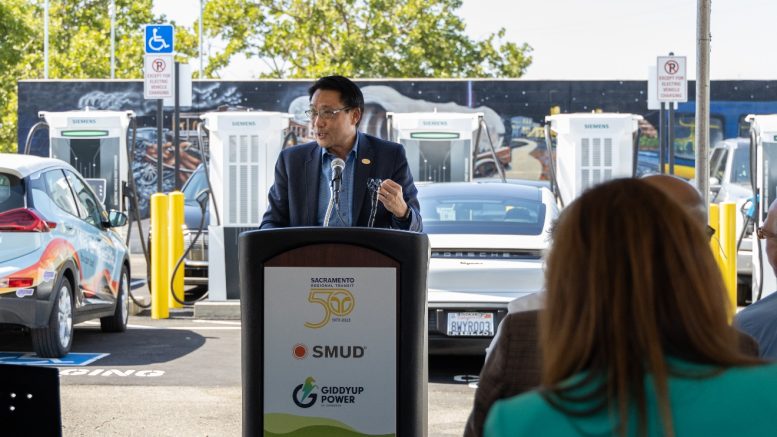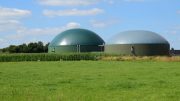You previously served as SMUD’s Chief Grid Strategy and Operations Officer and you were named Chief Executive Officer and General Manager in October 2020. As CEO, you lead the sixth-largest community, electric utility in the nation, serving a population of 1.5 residents and managing a $1.7 billion budget. Can you tell me a little bit about leading up SMUD’s operations so far?
Being in the industry for the past 41 years and having the opportunity to run all the major functions at SMUD has given me a unique perspective. When I became CEO, we had some big questions to answer. How do we bring the whole organization together to tackle climate change? How do we get buy-in for SMUD’s Clean Energy Vision and bold zero carbon goal? How do we get SMUD employees excited about the vision? We also had to figure out how to publicize our vision in the community, in the industry, and not just locally but also nationally and internationally to bring our community along with us.
When I became CEO in 2020, I introduced SMUD’s 2030 Clean Energy Vision. This includes our bold goal to eliminate all carbon emissions from our power supply by 2030. Within five months, we’d translated the vision into a road map to get to zero carbon, which is SMUD’s 2030 Zero Carbon Plan.
The first year was getting the plan developed and getting the California Energy Commission to adopt the plan. Now we are in execution mode. Cleanpowercity.org lays out our vision and shows customers how they can be part of this journey.
We committed to the most aggressive climate goals of any large utility company in the nation. SMUD will create a zero carbon power supply by 2030, leading the way by both pioneering large-scale utility decarbonization and demonstrating that we can do so inclusively and in collaboration with community and business partners.
SMUD is fostering an equitable transition to a clean energy future, supporting electrification of buildings, transportation and other technologies. And as importantly, we are improving air quality and public health while supporting inclusive economic and workforce development.
Some people have asked why SMUD is on such a bold path. My answer is simple. We can’t afford not to. We’ve all seen the devastating impacts of climate change. We’ve all seen the impacts of poor air quality. We can’t afford to waste any time. Sacramento children are 22% more likely to suffer from asthma than the average American kid. This region has also ranked among the nation’s worst for ozone pollution. So from a health standpoint, there’s a whole lot of good we can do. What we’re saying is that everyone can reap economic and health benefits of a future powered by clean energy.
There seems to be five key areas: moving to renewable resources, new technologies, community programs, electric vehicles and the community impact plan. Let’s start with moving to renewable resources. How’s that going?
That’s going really well. The first thing that we did this year was sign a power purchase agreement for 100 megawatts of geothermal energy with Calpine. We also just broke ground on 85 additional megawatts of wind power at our Solano Wind Farm that we will be bringing online soon. We just had a project go-ahead to do a utility scale solar project. That’s 344 megawatts with 174 megawatts of batteries. And we just signed a letter of agreement to pioneer and pilot carbon capture sequestration, in a 500-megawatt plant that will remove about 95 % of the carbon from that plant’s operations.
So the end result of reaching our renewable resource goals will enable SMUD to close two power plants. Is that right?
Yes, that’s the goal. Our flexible road map to zero carbon gives us the option to close two power plants in the Sacramento area. One thing that I want to add and make sure people understand while our goal is to remove gas generation from SMUD’s power supply we recognize that California, right now as a whole, is resource-constrained. So, we do work with others to take a holistic view to make sure we keep the system reliable. But yes, that’s really one of the options is that we can shut down the two plants that we’re talking about and maintain our world class reliability.
What new technologies are being developed? And what things are you the most excited about there?
There are three new areas of technology that we’re excited about. The first one is long-duration batteries. SMUD is working with a partner, ESS, to start deploying long-duration batteries in order to integrate more renewable dispatchable energy in the system. It’s also going to create jobs. We just took delivery of the first units last week. The second one is we are exploring carbon capture sequestration on existing power plants that can remove 90-95% of the carbon while maintaining reliability. Then the third is hydrogen. SMUD is working with other California utilities and agencies to advance the efficient use of hydrogen in both power plants and the transportation sector.
The goal in the progress report is of 288,000 electric vehicles on the road by 2030. At the end of 2022, there were 32,000. And you’re anticipating that number to reach 39,000 by the end of the year? Or an additional 7,000 cars. But in order to meet that ambitious 2030 goal, we will need to have 32,000 cars more per year. The report mentioned some new approaches to pick up the process. Can you talk about that?
Certainly, SMUD is not big enough to drive the market itself, but we’re seeing car manufacturers bringing more models and features into the market at a rapid pace. Secondly, additional incentives both at the federal and state level are helping drive the growth of electric vehicles. So we’re seeing a huge uptake of electric vehicles in the Sacramento region. California as a whole has reached the 1.5 million electric vehicle mark. So the expansion of electric vehicle options, the availability of incentives, price reductions and the continuous growth of charging networks locally and across California are collectively driving the increased adoption of EVs. SMUD is well prepared to support this growth. And, we’re well positioned to help our customers make informed choices when considering buying or leasing an EV. From incentives to guidance on how, when or where to charge, SMUD can help.
You think those are going to be enough to get you to go from 7000 to 32,000?
I think it’s going to be a bumpy ride, but I do think we’ll get there. Just like getting to a million cars in California was a bumpy ride in the beginning we’re seeing the momentum growing and I think we’ll get there. And, at SMUD we’re doing the work now to plan for the rapid growth, from grid investments to managed charging pilots to help customers understand their charging options and how their charging habits can save them money and benefit the power grid and all customers.
You need customers and businesses to take advantage of your programs, including building electrification, energy efficiency, transportation electrification, and distribution of energy resources. What’s your assessment about how those programs are going?
Those programs are in the early stages, but they’re going well. The participation in rooftop solar systems and rooftop solar plus battery programs is surpassing our initial projections. Just like our power is getting cleaner every day, the homes, buildings, and roads in the Sacramento area are becoming more environmentally friendly, too.
We also offer a really good incentive if you buy an electric vehicle. Or, if you’re interested in residential energy efficiency, like induction cooking and heat pump water heaters, we have you covered. SMUD is seeing a huge uptake on those.
Then we also have virtual power plants. Customers with solar-plus batteries can partner with SMUD to let us use a portion of the power stored in their battery in exchange for incentives up to $2,500. The virtual power plant program was just launched and it’s getting good reception and a solid adoption rate from our customers.
Let’s talk about your community impact program. What are the projects that you’re most excited about?
In our community impact plan, SMUD is integrating equity very intentionally in all our programs. We made a commitment that no community would be left behind. When we do our projects, for example, we are thinking: How do we create an inclusive workforce?
We’re doing a tremendous amount of recruitment from under-served communities, and providing opportunities for folks to work on clean energy projects. Our training focuses on skills such as EV charger installations, installing solar panels and work related to home electrification. We’re trying to close the loop from recruitment to job placement by reaching people who have been traditionally underrepresented. Everyone can find a place in a clean energy future.
And we’re spending a lot of time looking at how do we encourage small businesses to adopt clean energy and providing incentives for that. We think about how we can encourage small businesses to play a bigger role and make it easier for them to benefits from a clean energy future.
We are also very, very focused on bundling projects together. An example of a project is Sacramento Manor. We partnered with Sacramento Housing and Redevelopment Agency and private investment firms to electrify a whole low-income, multifamily development for seniors We got it done in two years. I think it’s the largest of that type of retrofit in the state of California. So, we’re showing how we can work together to quickly address community inequities through our work to create a clean energy future.

On June 1, SMUD, Bright Power, the Sacramento Housing and Redevelopment Agency and regional leaders held a ribbon-cutting ceremony to mark the electrification of Sacramento Manor, an affordable senior housing complex in south Sacramento. The project has successfully converted Sacramento Manor’s 260 units to operate exclusively on electricity, leading to significant cost savings and improved health benefits. Photo courtesy of SMUD
Tell me about other projects you’re the most proud of, in terms of where you were able have a community impact, but also do tremendous things in terms of greenhouse gas reduction and energy efficiency.
One is the work that we did with the Mobility Hub in Del Paso. We worked with public and private sector partners and with the Air Quality Management District to put a mobility hub in a historically under-resourced community, expanding access to electric vehicles, hydrogen vehicles and related green energy technology. This was a tremendous opportunity to introduce them to technology and make vehicles available for use.
Another one that we’re doing—in fact, we just had a grand opening for it. We partnered with Regional Transit and a private firm to create one of the largest public charging hubs at the Power Inn RT station. This is a groundbreaking clean energy project we’re very proud of. It has DC fast charging for passenger vehicles and trucks; it has jump bikes; and basically all kinds of modes of electric transportation. Together, we brought EV charging and other clean energy transportation options along the freeway on a busy corridor in a matter of months.
The third that I’m most proud of is we created a public/private partnership with Sacramento State to create the California Mobility Center, which centers on emerging e-mobility technology and workforce development.
One thing about the Community Impact Plan is you’re working with partners like the Air Resource Board, Regional Transit, Sacramento Tree Foundation, Sacramento Metro Chamber of Commerce, Sacramento Hispanic Chamber of Commerce. Can you talk about that process and how that’s helped you accomplish these goals.
One important aspect of the Community Impact Plan is that it was shaped by feedback and data from our community partners and others representative of some of our region’s most historically under-resourced communities. We looked into things like employment, health, economic well-being and income levels. By working with these agencies, we are trying to develop programs that make the most sense to various communities. How can we reach and partner with small businesses that are struggling? That’s one goal. SMUD also focuses on energy efficiency and electrification in low-income areas. We’re going neighborhood by neighborhood, such as Bonneville and Meadowview, to bring our customers cost-saving and energy-saving opportunities while also incorporating workforce development at the same time.
The other aspect is you can’t accomplish these goals on your own. Tell me your pitch to the community about why it’s important for everybody to be involved in this.
If everybody gets involved the task is achievable. An example of that was during the heatwave last September, when the grid was extremely stressed. We put a call out to our community to voluntarily shift load to avoid rotating blackouts—which SMUD has not done since the energy crisis two decades ago. And they did their part. Through basic thermostat pre-cooling and not charging their cars during the peak hours, we avoided those blackouts.
Obviously, a major component of our Zero Carbon Plan is partnering—and getting everybody involved. We have something called Join the Charge. We want to get 100,000 Sacramento residents to join and understand why it is important to Sacramento and the world to battle climate change. Our neighborhood-by-neighborhood walks are showing people the little things they can do to make a difference. From changing a light bulb, adjusting the thermostat, or just shifting load out of the 5-8 p.m. hours when energy usage is at its peak, we can all do our part. Cleanpowercity.org is filled with tips you can do that make a difference. Many of them are free. This is a social movement, because we want not only Sacramento but the whole world to join the movement. Everybody needs to play a part in this, and we can’t do this alone.
Paul, what question should I have asked you, but I didn’t?
Why our Zero Carbon Plan is attracting attention nationally and beyond is one question I’d like to discuss. Our plan is an open invitation to the world, to people who are interested in tackling climate change in a way that works with communities. We’ve received a tremendous amount of response from private industries around the world by bringing us ideas about how to engage customers, how to bring in new technologies, like the long-duration battery or carbon capture and sequestration. We’ve also done a lot of work around new business models, working with private businesses and other partners to build up a future workforce to work in high paying clean tech jobs. Every day, SMUD’s power supply is becoming cleaner, and more partnerships are being established to fulfill SMUD’s vision of a clean energy future that includes every community.






Sound interesting, but Paul forgot to mention that rooftop solar + batteries should be part of the plan. What is also missing is how unusually high fixed costs and stranded assets have led the SMUD to discourage customers from
choosing rooftop solar. SMUD’s fixed costs are the highest among all public utilities in California. What about transparency and showing us the metrics if SMUD is meeting its Zero Carbon Goal? This request was made to the SMUD Board, and their answer…Staff is too busy to do this??? SO until SMUD is more transparent and publishes metrics on their performance meeting the Zero Carbon Goals, this is just lip service.